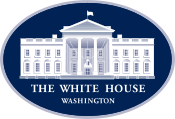Robert Cutler
| Robert Cutler | |
|---|---|
| 1st National Security Advisor | |
|
In office March 23, 1953 – April 2, 1955 | |
| President | Dwight Eisenhower |
| Succeeded by | Dillon Anderson |
| 4th National Security Advisor | |
|
In office January 7, 1957 – June 24, 1958 | |
| President | Dwight Eisenhower |
| Preceded by | William Jackson |
| Succeeded by | Gordon Gray |
| Personal details | |
| Born |
June 12, 1895 Brookline, Massachusetts, U.S. |
| Died |
May 8, 1974 (aged 78) Concord, Massachusetts, U.S. |
| Political party | Republican |
| Education |
Harvard University Harvard Law School |
Robert Cutler (June 12, 1895 - May 8, 1974) was the first person appointed as the National Security Advisor to Presidency of Dwight D. Eisenhower. He served between 1953 and 1955, and again from 1957 to 1958.[1]
Biography
He was born on June 12, 1895 in Brookline, Massachusetts. Cutler's brother, Elliott Carr Cutler, was a professor at the Harvard Medical School and a surgeon. His maternal relatives, the Carrs, were a prominent political and mercantile family in Bangor, Maine
A graduate of Harvard College and Harvard Law School he became an attorney and bank executive in Boston, Massachusetts before taking public office. Cutler was also very involved with the Army during his career. He served as an infantry officer in World War I, and acted under Secretary of War Henry L. Stimson during World War II. Cutler was an amateur writer; he was Class Poet at Harvard, and authored two novels – Louisburg Square (1917) and The Speckled Bird (1923) – by the time he received his degree. An autobiography, No Time for Rest, was released in 1966.
He died on May 8, 1974 in Concord, Massachusetts.[1]
References
- 1 2 "Robert Cutler Is Dead at 78. Aided Eisenhower on Security". New York Times. May 10, 1974.
Further reading
- "Bostonian at Work", Time, June 4, 1953. Retrieved March 7, 2007.
External links
- Papers of Robert Cutler, Dwight D. Eisenhower Presidential Library
- Records of the White House Office of the Special Assistant for National Security Affairs, Dwight D. Eisenhower Presidential Library
| Political offices | ||
|---|---|---|
| New office | National Security Advisor 1953–1955 |
Succeeded by Dillon Anderson |
| Preceded by William Jackson |
National Security Advisor 1957–1959 |
Succeeded by Gordon Gray |
